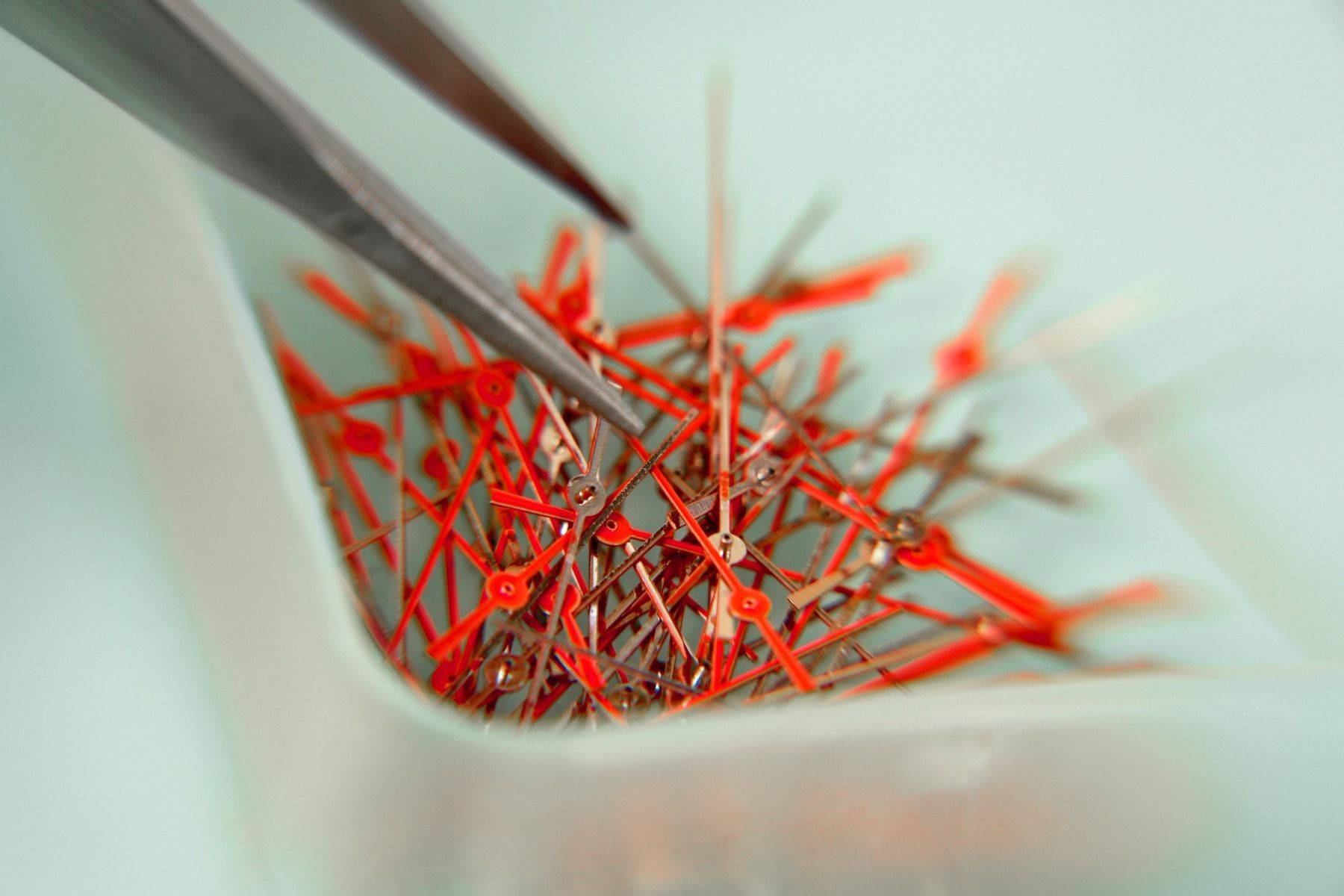Why doesn’t my second hand hit directly on the markers?
 Updated
by Vaer Watches
Updated
by Vaer Watches
If you've purchased a quartz watch and discover that the second hand is not perfectly aligned with the dial markers, don't freak out.
Detail is a common sign of quality in watchmaking. However, when it comes to second-hand alignment in quartz watches (whether the watch is made by Vaer, Citizen, Seiko, or Swatch) it is a feature that is impossible to control without complete machine assembly.
When a human technician assembles a quartz watch by hand, they use fine-point tweezers to mount the hour, minute and second hands on the small movement pinion protruding through the dial at the center of the watch. While the looped-end of the hour and minute hands are easily stacked on top of the pinion, positioning the second hand is more challenging. It is secured by pressing a hollow stem on the underside of the second hand into a ball joint at center of the pinion, locking the three hands in-place.
Even with the greatest attention to detail, and even if the second hand appears to align with the marker when it is placed, it is impossible to ensure the second hand will perfectly line up with all 60 of the second dial markings. A misalignment of even a few dozen micrometers (1/1000th of a millimeter) can compound on each tick of the second hand so that a watch can appear to hit the marks on one side of the dial and seem slightly off on the other side.
You may also notice a "slip" or "stutter" to the motion of a second hand - this is entirely normal as well! The second hand’s movement is controlled by the gears. There is an intentional space placed in-between each gear. That space (playfully) is called "backlash". This backlash is the cause of the second hand mis-alignment. The gear space causes the place where the second hand stops to slip a little. In other words, an adequate backlash is the solution for balancing durability, accuracy, and refined hand movement within the watch.
An adequate backlash is essential for smooth gear operation. To put it quite simply, the gears would stop turning if the backlash was too small.

- Reagan Cook, Vaer Co-Founder
If My Second Misses the Markers Will it Keep Time?
It's important to keep in mind that this misalignment is purely cosmetic. It has no impact on the time-telling capacity of the watch. An expensive mechanical watch may boast a beautiful sweeping second hand (an illusion created by the hand moving 6-10 times per SECOND) but this cosmetic appeal is balanced out by the reality that mechanical watches are constantly losing time (on average, about 10 seconds per day).
Conversely, once the hands on a quartz watch are set, electric vibrations will keep the movement oscillating in a consistent 60-tick pattern that will typically lose less than 5 seconds per month.
If you'd like to learn more about second hand alignment you can read our full article by clicking here.
